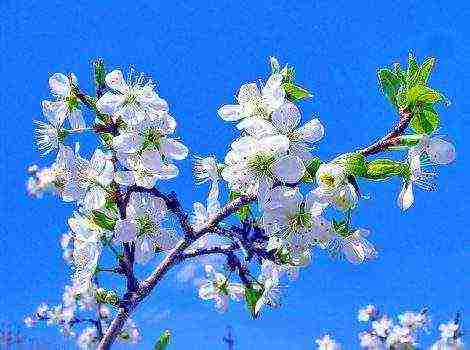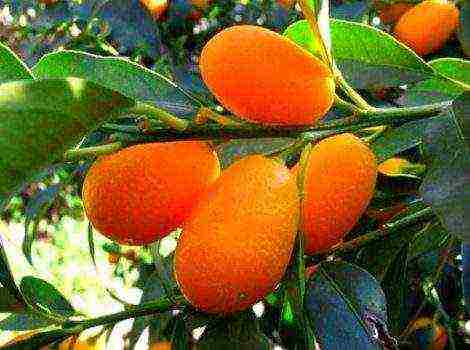Detailed characteristics of the pear variety Chizhovskaya
This pear variety was created at the Timiryazev Agricultural Academy by scientists Potapov and Chizhov. When crossing, the varieties Lesnaya Krasavitsa and Olga were usedwhich gave great taste and resistance to many diseases.
Pear Chizhovskaya passed variety trials and in 1933 was zoned (proposed for cultivation) in three regions: Middle Volga, Central and North-West. But most often this variety is cultivated in the gardens of the Samara, Moscow and Vladimirovsk regions. In this article, you can familiarize yourself with the characteristics and description of the Chizhovskaya pear variety - ripening terms, care features, tree diseases and methods of dealing with them.
Description of the variety
Tree crown, shaped like a pyramid or a cone, formed by slightly curved branches. The length and thickness of the shoots covered with reddish-brown or brownish bark are average. Skeletal branches are painted in a grayish tint, and the trunk is dark gray.

The height of the tree (standard type) can vary from 1.8 to 2.5 meters... A small number of lentils (formations with small holes, covered with loose tissue) are located on the trunk almost at ground level. The dark brown, slightly deviated buds are cone-shaped.
The leaves are medium-sized and have a beautiful green color. They have the shape of an elongated oval, and there are small serrated denticles along the edge. Leaves with a smooth top and bottom surface, are attached to the branches using cuttings of medium length.
The whitish flowers of medium diameter are bowl-shaped. The corolla is formed by petals with a solid edge. The buds, like the flowers, are pure white. They are collected in inflorescences of the type of shield, 5-7 pieces.
Characteristics of the fruit, ripening period
Chizhevsky variety gives medium-sized fruits of the obovate or classic pear shape, whose weight can vary from 110 to 140 grams... The smooth surface of pears with small dots is covered with a thin matte skin, dry to the touch.
Fruits are evenly colored (color can vary from green to yellowish) without bright pinkish spots. They attach to the branches with short stalks. The number of brown seeds with pointed tips in one pear varies from 5 to 10 pieces.
The fruits of this variety attract attention to themselves with a delicate slightly oily pulp, which emits a subtle aroma. The pulp can be whitish yellow or light yellowish. The sour-sweet taste of this pear was rated from 4.1 to 4.2 points by the tasters. The fruits can be used fresh, as well as in the preparation of marinades, compotes and juices... In the composition of pears, a large amount of sugars, soluble and dry substances and vitamin P were found.

The Chizhovskaya variety belongs to mid-season hybrids that ripen in late summer or early autumn. (Aug. Sept). The fruits can stay on the branches for a long time, but what is especially interesting, being fully ripe, when dropped on soft ground or grass, they do not deteriorate and are stored for about a week. At a temperature of 0 degrees, the fruits are stored for 2 to 4 months.... The fruits perfectly withstand transportation over long distances.
Since the Chizhovskaya pear sets fruits only with cross-pollination (almost self-fertile), in order to obtain regular and large yields, certain varieties are planted next to it - pollinators (Rogneda, Severyanka, Lada). Usually they are located at a distance of 4 to 5 meters from the main variety.
This variety is especially liked by gardeners for the fact that trees begin to yield crops already in 3-4 years of cultivation and it happens regularly. Adult specimens can produce up to 50 kilograms per tree.
Advantages and disadvantages
Among other varieties, the Chizhovskaya pear stands out:
- excellent scab resistant and to other diseases;
- high winter hardiness;
- endurance to bad climatic conditions.
The disadvantages include a noticeable decrease in fruit weight with increasing age of the tree. If young pears have fruits weighing 110-140 grams, then at the age of 10 they weigh about 80-90 grams.
Seat selection and landing
For planting Chizhovskaya pears, illuminated places with permeable, loose soil and a sufficient amount of nutrients are chosen. It is imperative to ensure that the groundwater is located at great depths.
Autumn is considered the optimal planting time.when the growing season is completely over (leaves have completely flown from the seedling). But you can do this in the spring, until the moment the buds awaken (the beginning of the growing season).
A pit for planting is dug 60 by 60 by 80 cm in size.If the soil in the personal plot or dacha is bad, then the size of the pit is increased by 20-30 cm.If the earth is clay, then drainage must be poured on the bottom of the pit, which should consist of sand and gravel or small crushed stone. The layer height can vary from 10 to 15 cm.
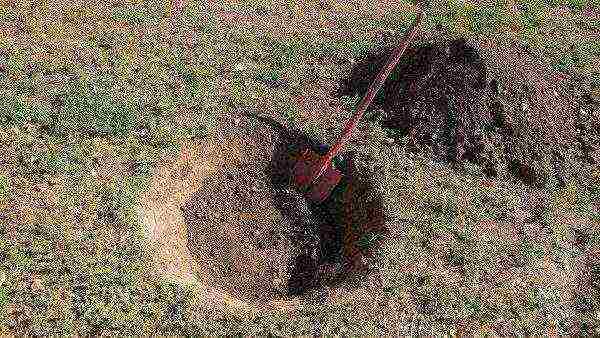
Where there is a lot of sand in the soil, clay soil is poured onto the bottom of the pit with a layer of 5 to 10 cm... This is done so that water and nutrients do not quickly go into the lower layers of the earth.
It is best to buy seedlings for planting at the age of 1 to 3 years. But 1-2-year-old trees take root and grow the fastest. The height of such seedlings of the Chizhovskaya variety usually ranges from 1.3 to 1.8 meters. The length of the roots should be at least 20 cm, and the thickness of the trunk should be more than 1-1.5 cm.
Before planting, it is advisable to treat the root system in a solution of heteroauxin or any other stimulant for root growth.... The roots are soaked for 3 to 12 hours. Before planting, they are examined, broken, dried out and very long are shortened.
The roots in the planting hole should fit freely and evenly. To fall asleep an earthen mixture is being prepared from garden fertile soil, completely rotted manure (humus), as well as potassium sulfate (350 grams) and superphosphate (350 grams). First, good garden soil is poured onto the roots (with a layer of 10 to 15 cm), and then - with a mixture with mineral fertilizers.
After planting, spill plenty of water over the planting site and top up the sagging soil. It is advisable to mulch the surface of the earth around the trunk. (cover) with peat, husks, wood chips or sawdust. This technique helps to retain moisture in the ground, prevents compaction and prevents a large number of weeds from appearing.

Do not forget to place a peg between the roots when planting, which will hold the seedling during bad weather.
Pear care Chizhovskaya
Caring for a pear of the Chizhovskaya variety consists in feeding, watering, pruning and combating diseases and pests.
Watering
Continuous watering throughout the season only for young pears in the first 3-4 years after planting. Wherein you need to ensure that the soil is soaked to the full depth of the roots... Such watering helps the rapid establishment and good growth of plants.
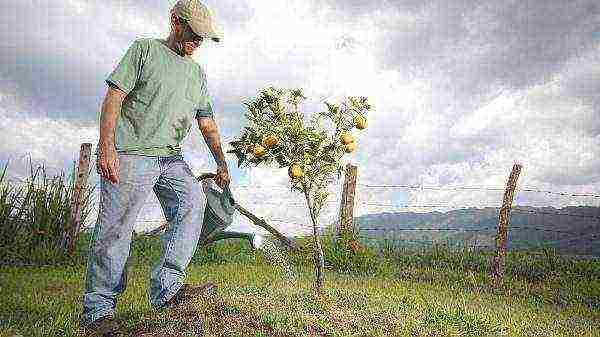
Mature trees are watered only a few times per season (from 3 to 7), but water should not be spared. Be sure to water pears before flowering and immediately after flowering., as well as in the autumn (at the end of the season).
Top dressing
In order for this pear variety to grow well, develop and give yields, additional feeding is needed. Seedlings are fed once a year at the very beginning of spring... To do this, the trunk circle is mulched with rotted manure (layer height from 4 to 6 cm), and mineral fertilizers (azofoska or Kemira) are added. One tree is enough from 100 to 150 grams.
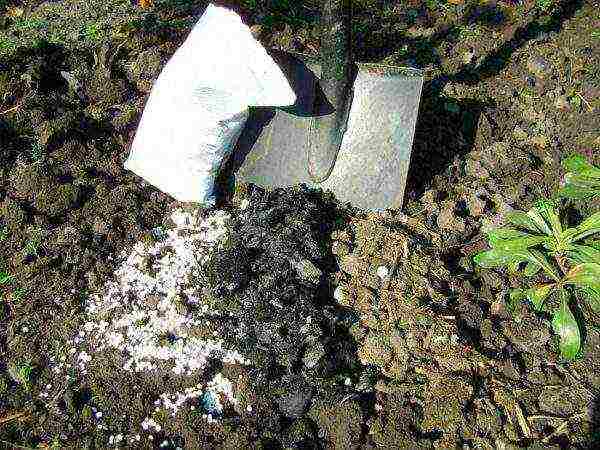
Mature pear trees are fed in the fall during digging... To do this, use half-rotted cow dung or other organic fertilizers. You also need to add potassium sulfate and superphosphate (250-350 grams each). In order for fertilizers to reach the roots in sufficient quantities, they are scattered along the diameter of the crown and sealed during digging to a depth of at least 35 cm.
Also held and additional feeding, which can partially regulate the size of the crop. If the number of fruits on the tree is small, then feeding is carried out before the ovary falls off. And if there are a lot of fruits, then feeding is carried out after the ovaries have fallen off.
Pruning
Newly planted trees are only pruned in early spring, even if planted in the fall. When pruning seedlings, it is worth remembering that the side branches should be located on the trunk at least 50-70 cm from the ground... Their length should not exceed 30-40 cm. The central shoot is shortened so that it rises 15-30 cm above the highest lateral branch.
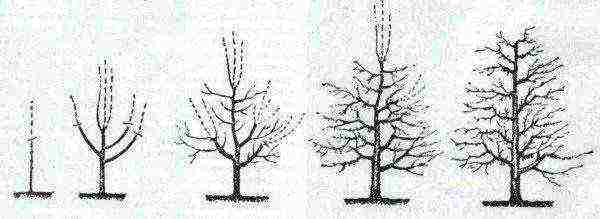
For adult pears, pruning is carried out twice a year.... During sanitary pruning, all broken, dried and diseased shoots, as well as old branches are removed. At another time, rejuvenating pruning is carried out, with the help of which the intensive growth of the plant is restored and maintained at a good level, as well as the number of flower dots is regulated.
When performing anti-aging pruning be sure to cut out perennial branches up to 3-5-year-old and older shoots. It is imperative to monitor the annual growth. If it is less than 15-20 cm, then the pruning is carried out weak (for 2-3 year old branches). If the growth rate is less than 15 cm, then the shoots are cut to older branches. To prevent the crown from becoming thickened, part of the fruiting branches inside it is removed.
Pests and the fight against them
Pear Chizhovskaya can be attacked by the following pests: green apple aphid, pear beetle (honeydew), Californian scale insect, pear bug, pear gall mite, apple blossom beetle and bukarka.
- Bukarka
- Pear beetle (honeydew)
- Pear gall mite
- Pear bug
- California scabbard
- Apple aphid
- Apple blossom beetle
Bukarka larvae feed on the tissues of the leaf and ovaries of fruits, as a result of which the leaves and ovaries crumble. To destroy this pest, insecticidal preparations with a wide spectrum of action, for example, Engio, are used.
Apple blossom beetles in early spring, they gnaw swollen buds and eat their inner part. Due to this attack, the kidneys lose juice. The flower beetle larvae, laid in the buds, feed on the pistil and stamens. The flowers first turn brown and then dry out. The following drugs are suitable to combat it: Iskra, Fufanol, Karate, Fastak and Sherpa. Usually only one treatment is carried out.
Diseases
Among the most dangerous diseases for this pear variety are cytosporosis, root cancer and frostbites.
Cytosporosis most often appears on the bark of the trunk and perennial branches that create the frame of the tree. It appears as a reddish-brown spot, slightly depressed inward.Soon, rather large cracks appear along the edges of the stain and on healthy wood, and the bark on the stain softens. If the disease has appeared quite recently, then the stain is thoroughly cleaned, treated with copper sulfate and a special garden varnish.
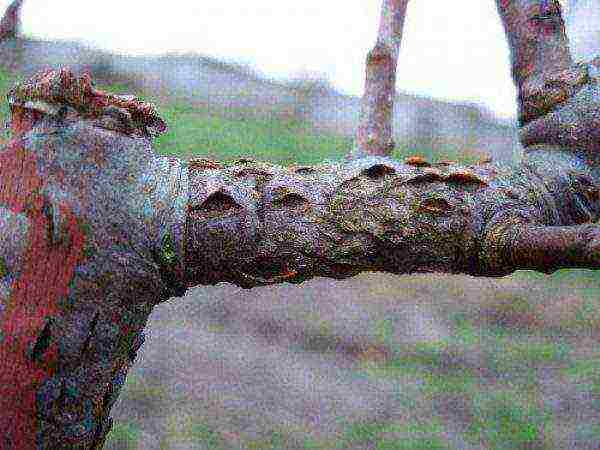
Frost breakers appear with a strong decrease in temperature, when the outer layers of the tree are cooled more strongly than the inner ones. The gaps resulting from frost are cleaned to healthy wood, then treated with Bordeaux liquid or copper sulfate and covered with pitch.
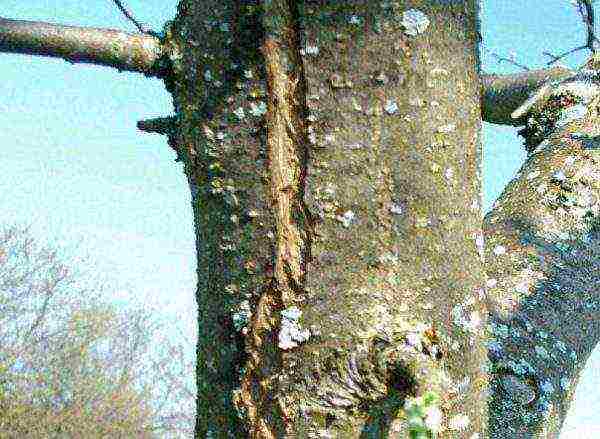
Root cancer appears in pears in the form of outgrowths at the grafting sites, near the root collar and on the roots. At first, soft growths increase in size and harden over time. The emergence of root cancer leads to a suspension of the growth and development of young trees. It has almost no negative effect on adult pears.
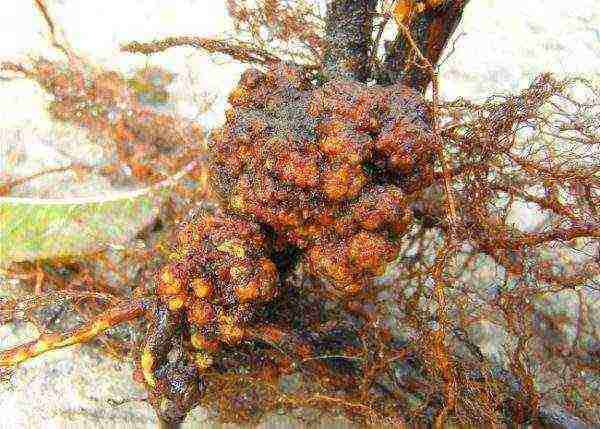
To prevent this disease from appearing in your garden, you need to buy healthy seedlings from industrial nurseries... And do not plant them in the place where the infected fruit trees grew.
Reviews
Borovchanka: We planted the Chizhovskaya pear tree in a dacha near Borovsk in 1998 as a one-year-old seedling. The tree grew without problems. Although the site is on a hill and is heavily blown by the winds, it never froze. Every year we have been looking forward to at least one fruit to taste it. A couple of times there were several fruits, but we did not get them. While we came again, birds already managed to peck them, and they fell. But our patience has been rewarded! We got a wonderful harvest last year! Our beauty looked so luxurious with fruits that we were sorry to deprive her of such an outfit! The husband was as happy as a child and carefully pressed the pears to him. The taste of this variety is amazing. The pulp is juicy, sweet. And what a scent !!! You can safely grow this variety in our conditions. Country Forum
Syoma: Pear Chizhovskaya began to bear fruit for 2 years after planting a seedling, bears fruit every year. Frost in winter and drought tolerates without any visible consequences. Garden star
